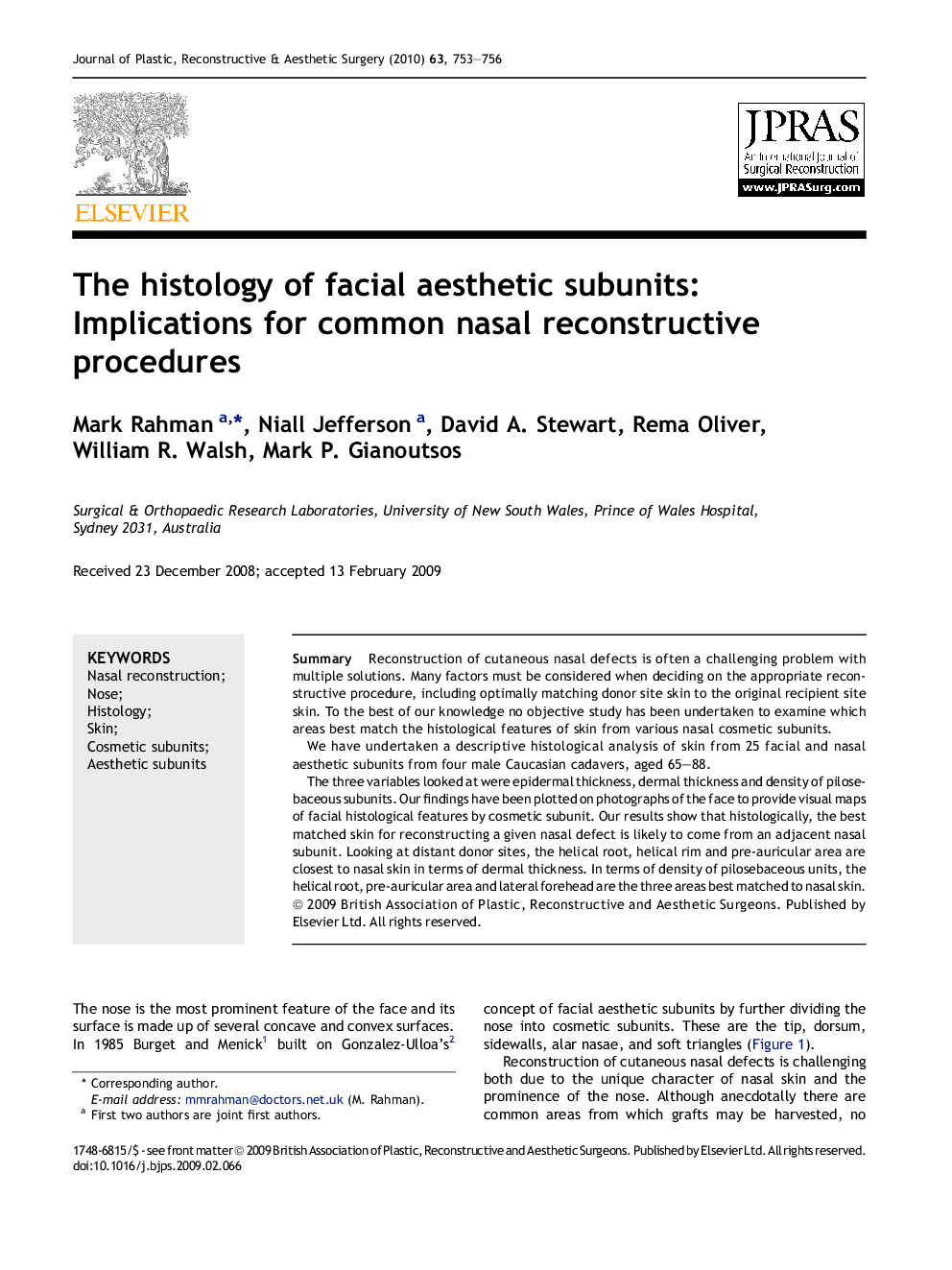| Article ID | Journal | Published Year | Pages | File Type |
|---|---|---|---|---|
| 4119513 | Journal of Plastic, Reconstructive & Aesthetic Surgery | 2010 | 4 Pages |
SummaryReconstruction of cutaneous nasal defects is often a challenging problem with multiple solutions. Many factors must be considered when deciding on the appropriate reconstructive procedure, including optimally matching donor site skin to the original recipient site skin. To the best of our knowledge no objective study has been undertaken to examine which areas best match the histological features of skin from various nasal cosmetic subunits.We have undertaken a descriptive histological analysis of skin from 25 facial and nasal aesthetic subunits from four male Caucasian cadavers, aged 65–88.The three variables looked at were epidermal thickness, dermal thickness and density of pilosebaceous subunits. Our findings have been plotted on photographs of the face to provide visual maps of facial histological features by cosmetic subunit. Our results show that histologically, the best matched skin for reconstructing a given nasal defect is likely to come from an adjacent nasal subunit. Looking at distant donor sites, the helical root, helical rim and pre-auricular area are closest to nasal skin in terms of dermal thickness. In terms of density of pilosebaceous units, the helical root, pre-auricular area and lateral forehead are the three areas best matched to nasal skin.
